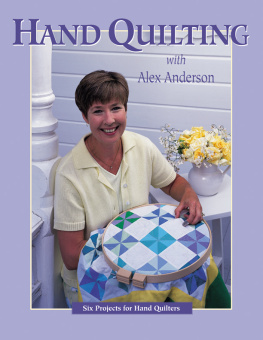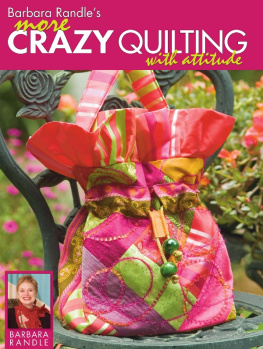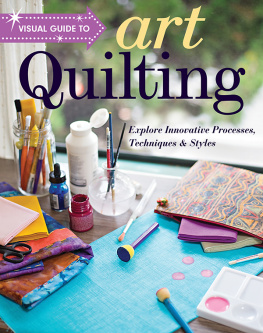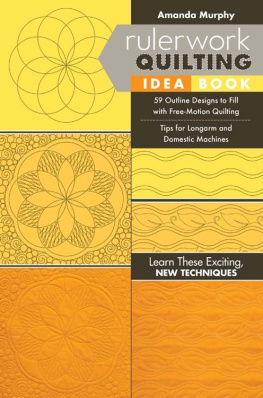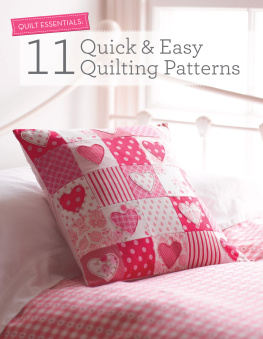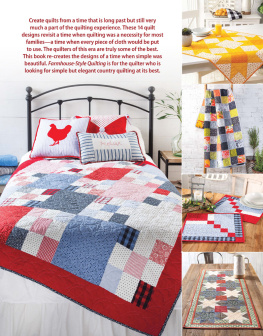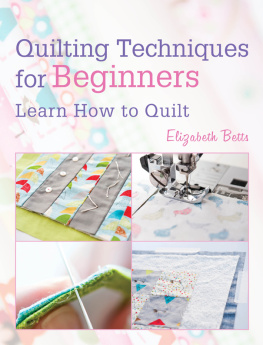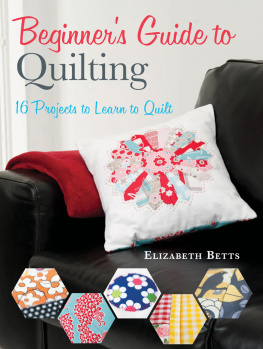ABCs of
Longarm
Quilting
Patricia C. Barry
2007 Patricia C. Barry
Published by

Our toll-free number to place an order or obtain a free catalog is (800) 258-0929.
All rights reserved. No portion of this publication may be reproduced or transmitted in any form or by any means, electronic or mechanical, including photocopy, recording, or any information storage and retrieval system, without permission in writing from the publisher, except by a reviewer who may quote brief passages in a critical article or review to be printed in a magazine or newspaper, or electronically transmitted on radio, television, or the Internet.
The following registered trademark terms and companies appear in this publication: Gammill, Statler Stitcher, Snake Light, Signature, Madeira, Sulky, A&E, Inc., Euro-notions, The Stencil Co., Heritage, Golden Threads.
Library of Congress Catalog Number: 2006935646
ISBN: 978-0-89689-454-9
eISBN 13: 978-1-4402-1802-6
Edited by Andy Belmas
Designed by Emily Adler
Printed in China
Introduction
This book is written for anyone who is contemplating getting into longarm quilting and for those of you who have purchased a quilting system and now are looking for more detail.
I became a professional quilter when I opened my studio in 2002. My original business proposition was to start a retail quilting studio. I wanted to teach people to use my longarm quilting machines so they could finish their own quilts. I read every book on the market (both of them) and talked to other professional quilters (if they would talk to me) and searched for other businesses with the same objective (and found none). So, I collaborated with my husband on a business model, and we got very busy implementing it. We made some mistakes, but we learned a lot and now would like to share our knowledge and help quilters transition confidently from rookie to expert.
Most quilters know how to sew, and so did I. But my sewing experience did not prepare me for the world of quilting. I remember the first time my good friend, Maria, tried to describe a rotary cutter to me. I could not imagine why a razor-blade weapon was necessary for quilting. Then she told me about free-motion quilting on a home machine. I wasn't sure what feed-dogs were, much less how to drop them.
After retiring, I did a special project as a computer consultant. Suddenly I had some spending money, and I remembered seeing a longarm quilting machine in our local quilt shop. I told my husband I wanted to buy a new sewing machine. Boy was he surprised! But he was so intrigued with its engineering, he hardly complained about losing his pool table and dart board to make room for it.
Once the machine was delivered and my initial fears were overcome, the idea of a retail quilting studio took form. I really thought I knew everything I needed to know to set up a small business. Wow, was I in for a shock. I had retired after over twenty years of experience in Information Systems with a major corporation. I assumed that if I could teach e-mail to sales people, I could teach quilters to use a longarm quilting machine. That was the last time my business assumptions were accurate.
This book is written for the benefit of any quilter who wants to start her (or his!) own longarm quilting business. It talks About the longarm quilting world and describes the Basic techniques for running the machine. And I describe the necessary steps toward building Confidence so you are ready to start your own business and take in customer quilts. I believe quilting is one of the most creative and satisfying occupations possible, and I am really encouraged by the incredible growth of the quilting industry.
I hope this book provides a path for you to travel so you can avoid many of the mistakes that I have made. I invite all of you to share your personal experiences with me, too. Please write to me in care of Krause Publications, Iola, WI. I would love to hear from you!

To Al, without your support this would still be a dream.
About Longarm Quilting
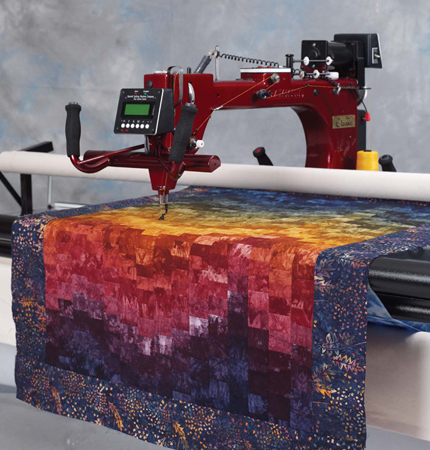
This first section describes the terms and tools of longarm quilting. The concepts presented also apply to quilting on a short-arm machine or a domestic machine using a quilting frame. If you are using a machine that sits on a platform and can move in all directions across the quilt, this book is for you.
It is a good idea to read the entire section before you begin to quilt. It is also a good idea to come back and read it again after a little practice so the information can be understood more completely.
Having taught hundreds of quilting classes, I have found there are two types of quilters: artists and engineers.
Therefore, many of the techniques and concepts presented in this book are described two ways: one way for the artist and one way for the engineer.
ARTISTS TEND TO BELIEVE:
Pattern directions are merely suggestions
There are no such things as perfect points
Unscripted and spontaneous methods provide inspiration
ENGINEERS FIRMLY BELIEVE:
Artists and Engineers are terms of endearment and should not be taken personally. Most of us have characteristics of both.
tip
Keep the quilting police out of your studio, and empower yourself to be creative and unlimited! Don't let baggage limit your creativity. I still hear quilters telling others Stipple quilting can't cross over itself, Appliqu pieces must have finished edges, Monofilament thread is fishing line. These rules have all been broken very successfully. So write your own rules and enjoy the ride!
The Machine
Artists: The machine head is similar to a domestic sewing machine except it is much larger and it is mounted on a platform that enables it to float across the surface of the quilt and move in any direction.
Engineers: The stitching mechanics are simple. The machine head pushes the needle into the fabric, taking the thread down into the bobbin area where a hook catches the thread and wraps it around the bobbin case to begin the stitch. A lever pulls on the top thread removing the slack and completing the stitch.
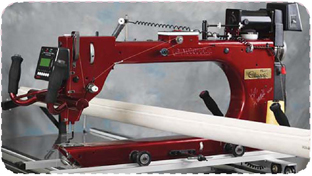
Longarm quilt machine
hint
Longarm quilting machines are large, and they look very industrial, but don't be intimidated. The more you learn and practice, the less scary the machine will be!
The Needle and Foot
Artists: The movement of the needle bar and hopping foot are precisely timed to work together as a unit.
Engineers: When the hopping foot descends, it compresses the fabric layers and holds them for a split second. In that split second, the needle enters the fabric, the hook grabs the thread and wraps it around the bobbin to form a stitch and comes back up.




